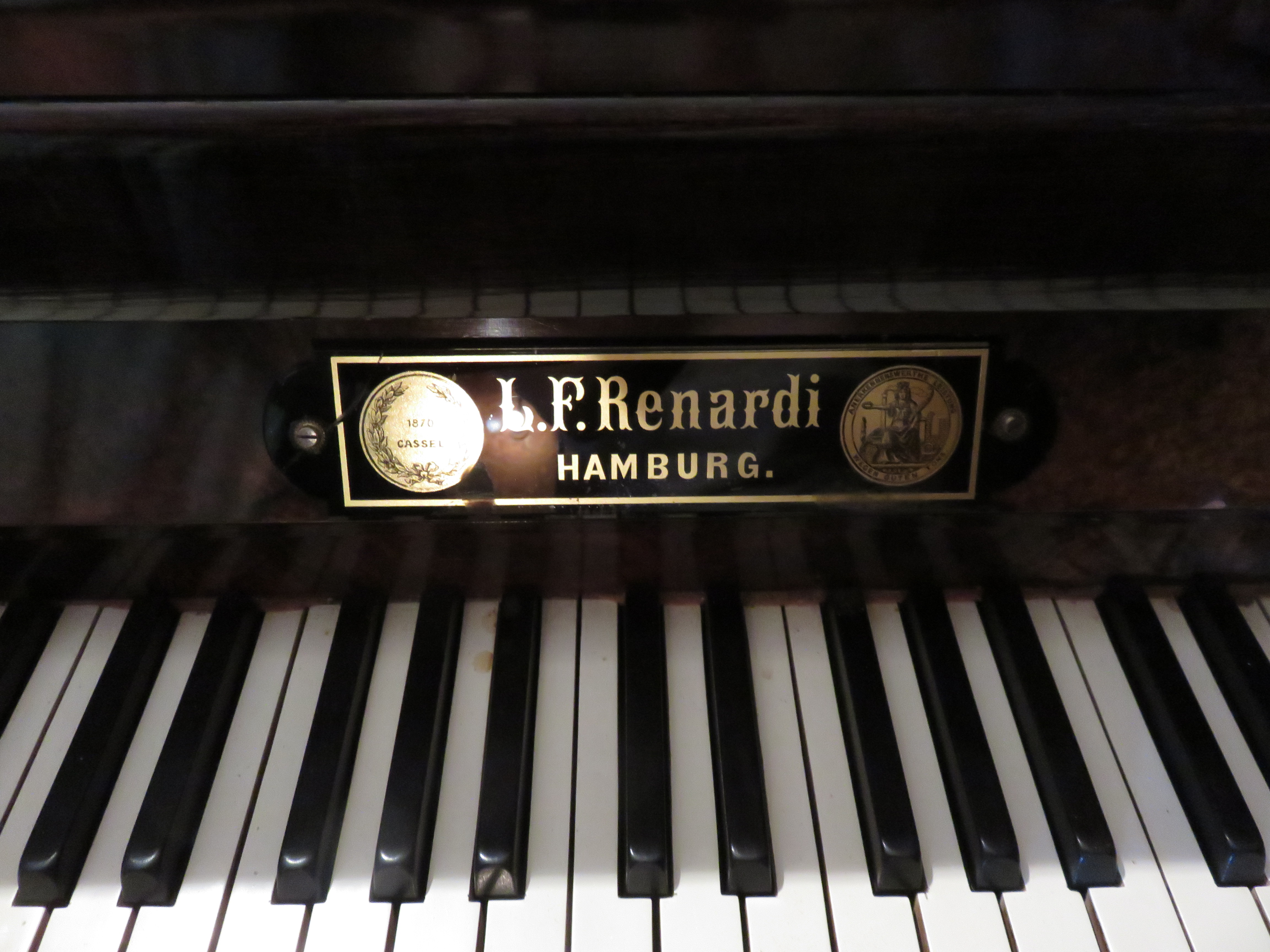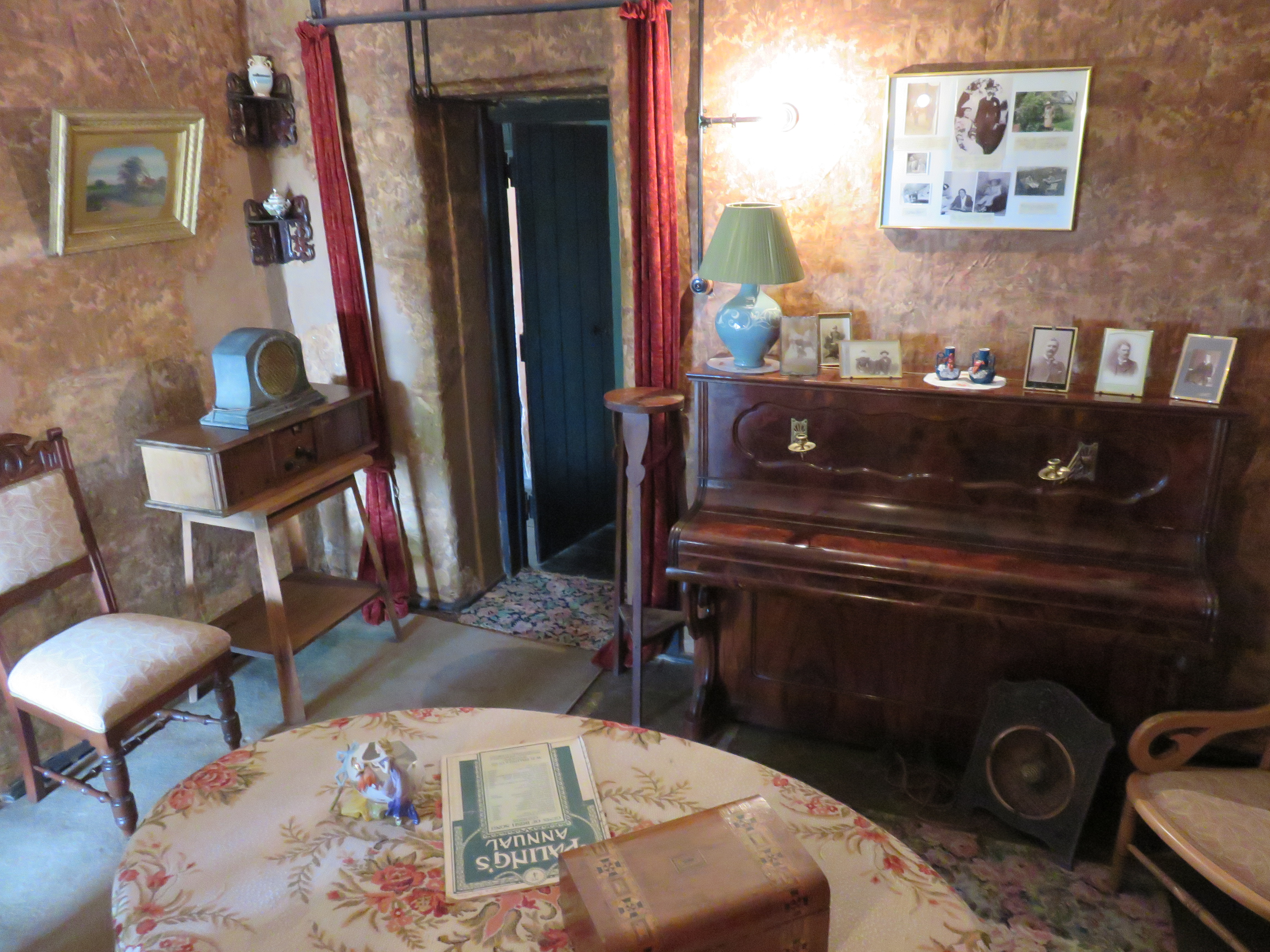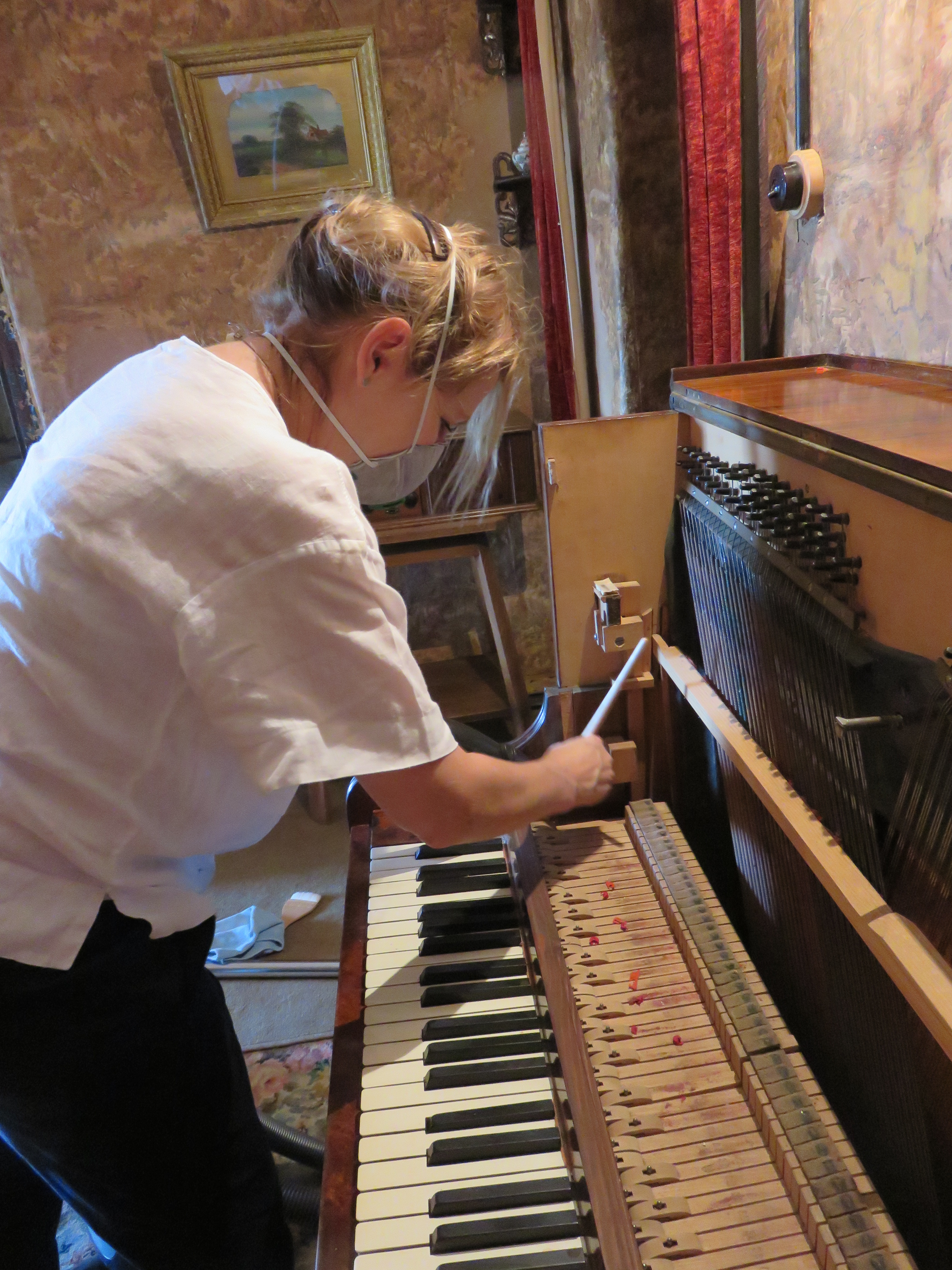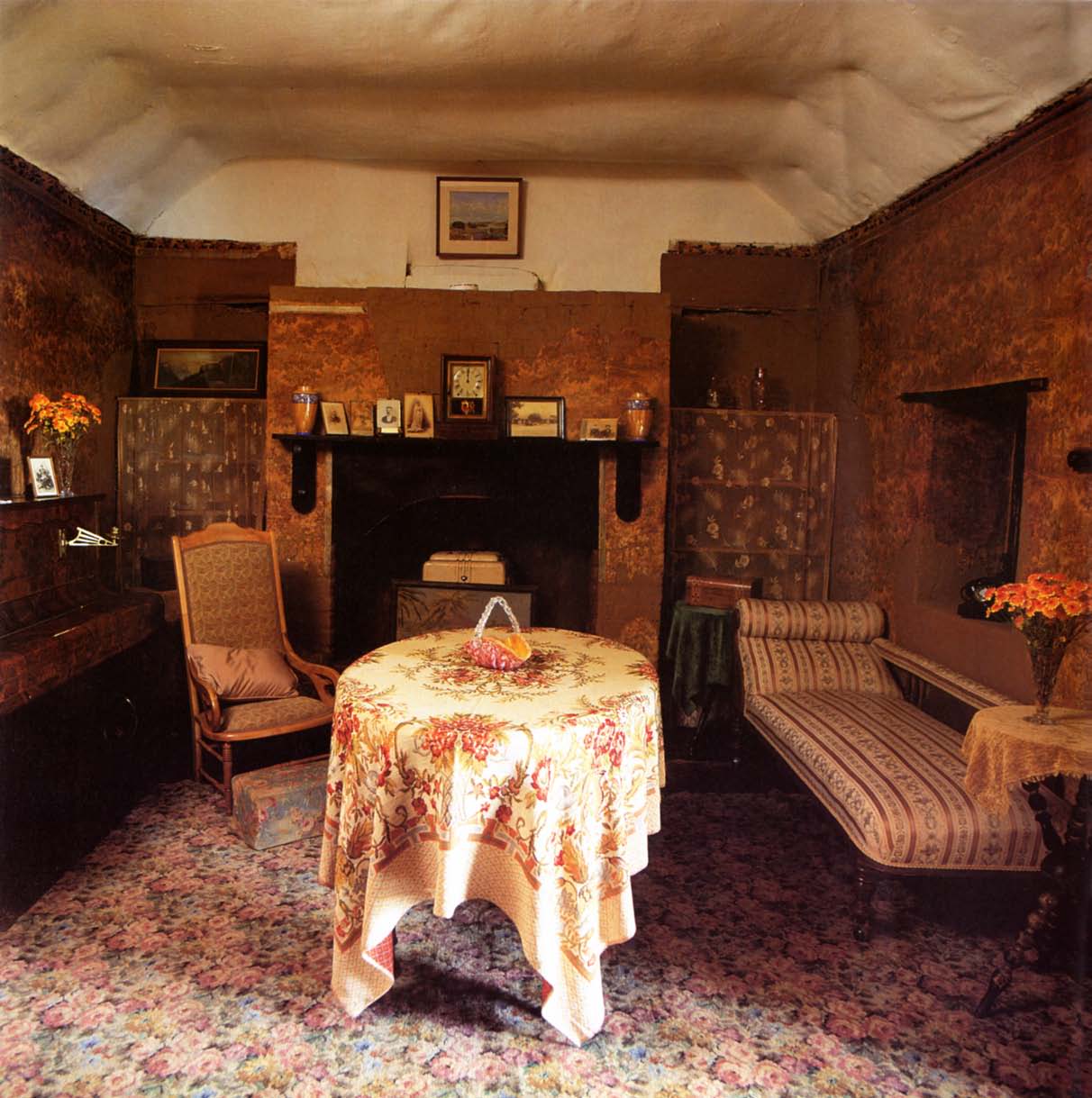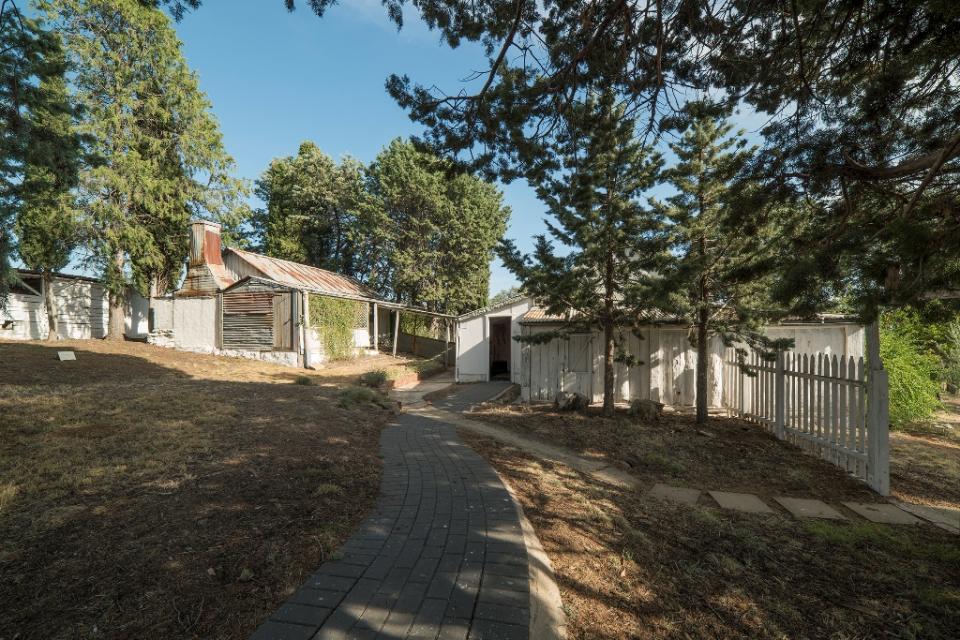
Mugga-Mugga
The house and collections
Mugga-Mugga is a simple cottage that provides insights into the lives of workers on the Limestone Plains of the Australian Capital Territory. The first timber shepherd's hut, which has not survived, was built for the head shepherd of Duntroon estate. A four-room stone cottage constructed in the 1830s lies at the heart of the building as it is today. Extensions were added around it in the 1860s, including the slab bedroom and verandah at the front, and the kitchen and dining room at the back. Further additions were made in the 1950s and 60s. It is displayed as it was during the time of the Curley family, who lived in the cottage from 1913 to 1995.
The Curley family came from Roscommon in Ireland, where Patrick Curley senior was born in 1817. His wife Mary Fahey came from Ballinasloe, County Galway. With their 5-year-old son Thomas, they sailed from Liverpool and in 1842 they arrived at Duntroon.
Patrick Curley junior grew up on the Duntroon estate, becoming a junior shepherd at age 13. He married Annie Elizabeth Tong in 1893 and they had three daughters: Ada, Sylvia and Evelyn. They moved to Mugga-Mugga cottage - a more isolated spot than the village of Duntroon - in 1913. By the 1920s only Evelyn remained at home with her parents to manage the farm. Patrick died in 1936 and Annie in 1948. Mugga-Mugga Cottage opened to the public through the activism of Sylvia Curley, who succeeded in preserving Mugga-Mugga as a house museum and a fine example of the pioneering past.
Music at Mugga-Mugga
Originally much of what is now Canberra was the estate of the Campbell family of Duntroon. A Gaelic- speaking community of shepherds were recruited from Scotland to work the estate, and the music played in the estate cottages would have reflected these cultural origins. One of the shepherds was Mr Sinclair, who wandered the slopes of Mt Pleasant and Mt Ainslie playing his bagpipes with the 6-year old Patrick Curley following him, "enjoying his strange music.” Mr Sinclair is acknowledged in the Queanbeyan Age and General Advertiser as playing at balls and dances at Duntroon in the 1860s, and a Mr. W Hoolahan, violin, is also mentioned in this context.
When Patrick Curley was employed as a junior shepherd in 1865 at age 13, he stayed at Mugga-Mugga - the first outpost from Duntroon - in the stone cottage built by Robert Campbell for his shepherd Ewan McPherson. It was about this time that Patrick received his first violin, and when he was 17, his parents gave him the violin that is now in the museum. This is a a 19th-century mass-produced instrument, unlabeled, and has been repaired many times by an amateur or amateurs during its playing life. His daughter Sylvia recalled that "self taught, he would play for hours after work for private home dances and parties." Patrick would ride for miles to play for dances around the district where the waltz, the Quadrilles, the lancers, the Valse Cotillion, the Mazurka, the Polka, the Schottische and the Varsoviana were popular.
The piano (described in Sylvia's oral history as 'Evelyn's piano') is a late nineteenth-century Renardi, manufactured in Hamburg. It is believed that the piano was brought to Mugga-Mugga in 1913 or shortly after, when the Curley family moved to the cottage. Since Canberra had no shops that could provide musical instruments until the 1920s, it seems likely that the piano was acquired secondhand, and that it came from Queaneybean or was purchased from another family farming in the district.
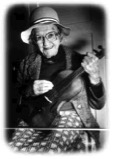 Sylvia Curley’s memoirs also record that their mother took Evelyn in the sulky to the convent in Queanbeyan for piano lessons. On Sunday evenings they would often go to the house of the Young family, where the fathers would play together and the daughters sing and accompany each other on the piano. Music-making for the pleasure of friends and family was the hallmark of entertainment at Mugga-Mugga. The sound of the girls practicing their scales and examination pieces on piano and violin would have wafted out across the paddocks on a regular daily basis throughout their school days. The music books used for these lessons are part of the household music collections.
Sylvia Curley’s memoirs also record that their mother took Evelyn in the sulky to the convent in Queanbeyan for piano lessons. On Sunday evenings they would often go to the house of the Young family, where the fathers would play together and the daughters sing and accompany each other on the piano. Music-making for the pleasure of friends and family was the hallmark of entertainment at Mugga-Mugga. The sound of the girls practicing their scales and examination pieces on piano and violin would have wafted out across the paddocks on a regular daily basis throughout their school days. The music books used for these lessons are part of the household music collections.
Sylvia Curley’s memories of music in the home as she grew up conclude by voicing her hopes for maintaining the piano in working order as part of the life of the house:
Sylvia Curley: … My mother … purchased this [radio] set. It was run by a car battery, off a car battery, and the table and everything was all there linked up. So father would listen to the music on 2CA and all the tunes. And this is in his retirement years. Then to come across to play and Mother would hear him. She’d be up there cooking. He’d play and in no time he’d be playing that tune. He was a musician. His violin is with me down there and it’s going to come out here. It’s a beautiful old violin. He used to be asked about playing all the dances at the places. In the very early days, the governess at Duntroon would send for Patrick Curley to come along and play music for the Miss Campbells and Mr Campbells - the boys and girls - to learn to dance. That’s the early Campbells.
Interviewer: When he was playing, what sort of music would he play – Jigs and reels or…?
Sylvia Curley: Old-fashioned things - the quadrilles and the lancers, something that you wouldn’t dance to. You wouldn’t know to how to dance quadrilles and lancers now. All those old tunes. [plays the piano] It still has a tune.
Interviewer: It needs a tune!
Sylvia Curley: I know and I’d like to get it cleaned out!
The Music Collections are extensive, and linked to Listening to the Past, ACT Historic Places funded a staff position to accession 61 items for use in the project. There are several categories of sheet music for piano and violin: piano instruction, violin instruction, religious songs, Irish popular songs, Australian patriotic songs of the First World War, musical comedy numbers, Scottish popular songs, dance albums, and American popular songs of the 1920s. A selection of popular music would have been available through mail order, as newspaper supplements and in small quantities in music shops once these were established in the region. Sheet music for tuition was usually ordered from Sydney and purchased by the convent, then added onto the bill for student tuition.
Interpretation
The musical history of Canberra’s house museums offers many touching, homely episodes such as this interview, but in uncovering and recreating the music played in each house, we may also, in the words of John M. Picker, ‘trace nineteenth century aurality as it became newly urbanized, industrialized, and commercialized – that is to say, newly modern’. Listening to the Past enables visitors to hear the Australian historical journey of expanding settlement by sharing in the recreation of the musical accompaniment to life in the past.
Events at Mugga-Mugga have included:
- May 2013 - Dr Jennifer Gall presented the Sylvia Curley Oration, titled ‘Music in Early Canberra’. The Curley violin was restored so that it could be played for this talk; the event inspired the development of Listening to the Past.
- April 2015 - For the Canberra and Region Heritage Festival National Trust Open Day at Mugga-Mugga, Jennifer Gall presented a talk in the Education Centre and then with Ian Blake, gave three recitals in the house of music and songs from the Curley music collection.
- December 2016 - Canberra pianist Anthony Smith collaborated with the Griffyn Ensemble to bring the Mugga-Mugga sitting room to life with a Suite of new compositions by Michael Sollis, Artistic Director of the Gryffin Ensemble, based on texts from newspaper reports and oral history recordings about the Curley Family and the role Mugga-Mugga played in the early days of Canberra.
2016 events have been filmed and recorded and will be deployed to the ACT Historic Places website.
